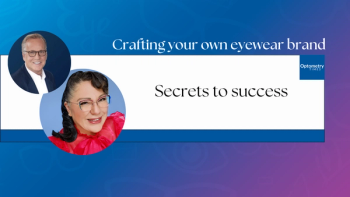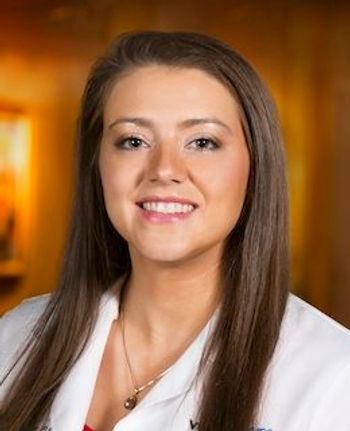
Diagnosing and treating lagophthalmos
Since I read Dr. Robert Latkany’s study on nocturnal lagophthalmos in 2006,1 I am perpetually on the lookout for it, especially in the patients who present with dry eye symptoms. Sometimes it’s easy to spot lagophthalmos-sometimes, if you ask your patient about lid closure, they will report to you that they know about their incomplete lid closure, mostly when they sleep.
Since I read Dr. Robert Latkany’s study on nocturnal lagophthalmos in 2006,1 I am perpetually on the lookout for it, especially in the patients who present with
More from Dr. Mastrota:
Korb-Blackie lid-light evaluation
My method of checking for lagophthalmos is to instill fluorescein as usual, then look at the patient’s closed lids under cobalt blue light at the slit lamp from below. Any green glow visible is suggestive of incomplete lid contact. There is another way, however. At the end of last year, Blackie and Korb published a paper that describes the Korb-Blackie light test-a method to establish if the lids are truly in contact with each other during normal eye closure.2
Briefly, the Korb-Blackie lid-light evaluation is performed by placing a transilluminator against the relaxed, closed, outer upper eyelids of semi-reclined patients. The amount of visible light emanating from the lid area between the lashes is quantified in which zero represents no light; one represents minimal light; two represents moderate light; and three represents severe light around the temporal, central, and nasal sections of the eyelids. Light emanating from between "closed" lids during the Korb-Blackie lid-light evaluation
Lagophthalmos examination
Lagophthalmos is associated with exposure keratopathy, poor sleep,3 and persistent exposure-related symptoms. There are a variety of causes of lagopthalmos that can be grouped as proptosis/eye exposure etiologies and palpebral insufficiency etiologies.
Although obvious lagophthalmos is usually detected, it is more challenging to identify obscure lagophthalmos due to either eyelash obstruction or overhang of the upper lid anterior and inferior to the most superior portion of the lower lid in a closed position.
Related:
In the lagophthalmos examination, use low-level light intensity with a fine slit beam to limit voluntary lid squeezing. Ask the patient to close his eyes as if asleep; wait a few moments to limit intentional forced lid closure. Check to see that thick eyelashes are not preventing full lid seal. Then establish that the upper lid is not “hanging over” the lower lid-here is where the Blackie-Korb technique can add additional information.
Of course, associated history/conditions with lagopthalmos include seventh nerve dysfunction, trauma, prior eyelid surgery, and thyroid dysfunction.
Remember that patients with nocturnal lagophthalmos may also have daytime lagophthalmos with incomplete lid closure with each blink. These patients may exhibit secondary signs and symptoms related to inferior corneal exposure. Also note the frequency and quality of a patient’s blink as she sits opposite you in the exam chair (technology, such as TearScience LipiView, can be very useful).
Treatment
Treatment of nocturnal lagophthamol/lagophthalmos ranges from supportive therapy to surgery; however, bolstering the ocular surface and tear film to buffer the surface problems associated with exposure is key. Lid hygiene and environmental and dietary changes (such as the addition of omega supplements) can enhance the tear film and target meibomian gland dysfunction. Similarly, patients should be instructed to perform “blink exercises” to fully and completely spread the tear film, hopefully developing a healthy blink habit.
Related:
Estimates suggest four to 20 percent of the population have lagophthalmos.4 Keep in mind that it is as important to examine the closed eye as it is the open eye in order to clue in to this subtle and easily overlooked pathology.
References:
1. Latkany RL, Lcok B, Speaker M. Nocturnal lagophthalmos: an overview and classification. Ocul Surf. 2006 Jan;4(1):44-53.
2. Blackie CA, Korb DR. A novel lid seal evaluation: the korb-blackie light test. Eye Contact Lens. 2014 Dec 10;41(2):98-100.
3. McNab AA. The eye and sleep. Clin Experiment Ophthalmol. 2005 Apr;33(2):117-25.
4. Tsai SH, Yeh SI, Chen LJ, et al. Noctural Lagophthalmos. Int J Gerontol. 2009 Jun;3(2):89-95.
Newsletter
Want more insights like this? Subscribe to Optometry Times and get clinical pearls and practice tips delivered straight to your inbox.


















































.png)


